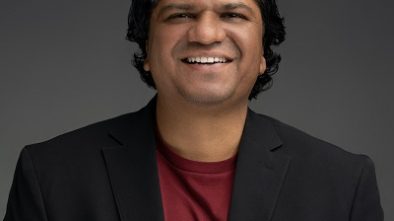Rutgers Physical Therapy Startup Smart MS3 is Piloting Wearable That Measures Patient Progress
Akash Randhawa’s 65-year-old grandmother was cooking in the kitchen in late 2019 when she suffered a massive stroke that left her paralyzed on the left side of her body and unable to speak.
Randhawa, a 20-year-old Rutgers University student from Robbinsville, knew that his grandmother’s road to recovery would require months of painful physical therapy. Randhawa had little faith in the process. That is what 12 years of playing soccer and suffering ankle injuries had taught him.
Randhawa wanted her to receive the best therapy possible, backed by the most advanced technology.
That led him and some friends to develop a device that, with the help of a smartphone application, allows patients to see their muscle movements and improvement. The device uses a mix of data from machine learning, as well as electromyography (EMG) sensors, microcontroller boards and Bluetooth technology, to help diagnose problems and recommend exercises, said Randhawa, now CEO of Smart MS3 (Robbinsville), the startup he ended up cofounding.
“Our team is building a wearable solution that looks at objective data tracking and provides objective measurements of how a patient is really getting better through physical therapy,” he added.
Other team members include:
- Varun Kota, CTO, who worked with Randhawa to streamline the device and establish the business. He also attends Nova Southeastern University, in Fort Lauderdale, Florida.
- Fahad Karim, from the University of Michigan, a research and development engineer. He joined the team in January 2020.
- Manu Sankaran, CFO, another Rutgers student, who joined the team in September 2019.
- Hammad Farooqui, also from Rutgers. He lives in Somerset, and joined the team in March of this year as an electrical engineer.
Randhawa’s grandmother, Narinder, is still in occupational therapy two years after her stroke. A therapist comes to her home twice a week, and she now walks with the assistance of a cane.
Narinder remained hospitalized until March 2020, when she entered an inpatient rehabilitation center where she met with a therapist five times a week.
“From there, in June, she moved back home and received outpatient physical therapy. That is when I started attaching the device to her knee. We made a quick prototype and just started seeing if it helped her out,” said Randhawa.
“The physical therapist would do some exercises with her and, at the end of each session, to get a gauge of where she was progress-wise, the therapist asked her how she felt. And there was some additional subjective testing, but it really made little sense to us. I’m saying that that’s all they did for two or three months while she was getting therapy.
“Right now, everything’s really subjective and super-archaic. We are stuck. While every technology is advancing everything around us, we are still using simple subjective metrics” in physical therapy, he said.
“There are sensors out there that measure anything and everything, but not in the world of physical therapy. So, we thought, why can’t we” fill this gap?
“Why not build something that literally looks at your muscle, looks at how it’s getting better, how it’s healing and give that data to patients and clinicians, so they know how exercises are really affecting them, how they’re really getting better and how they can view that progress more objectively,” he said.
So far, about 40 patients at several New Jersey clinics have completed a three-month pilot program. The startup plans to enlist another 250 clinics and raise $500,000 to pay for it.
“I sometimes say she’s my guinea pig,” he said about his grandmother. “She’s really getting better and providing more insight. We are able to see the fruit of her struggles.
“You actually apply the device onto the muscle that’s injured. And while you’re doing exercises, you’ll be actually able to see how your muscles are really working on your phone.
“You’ll see jumps in how muscle activation is occurring. You’ll see how the exercise you’re doing, how impactful it is.
“Week after week, you can refer to the data to see progress occurring. Rather than just feeling yourself out again, you can see the data in front of you,” he said.





